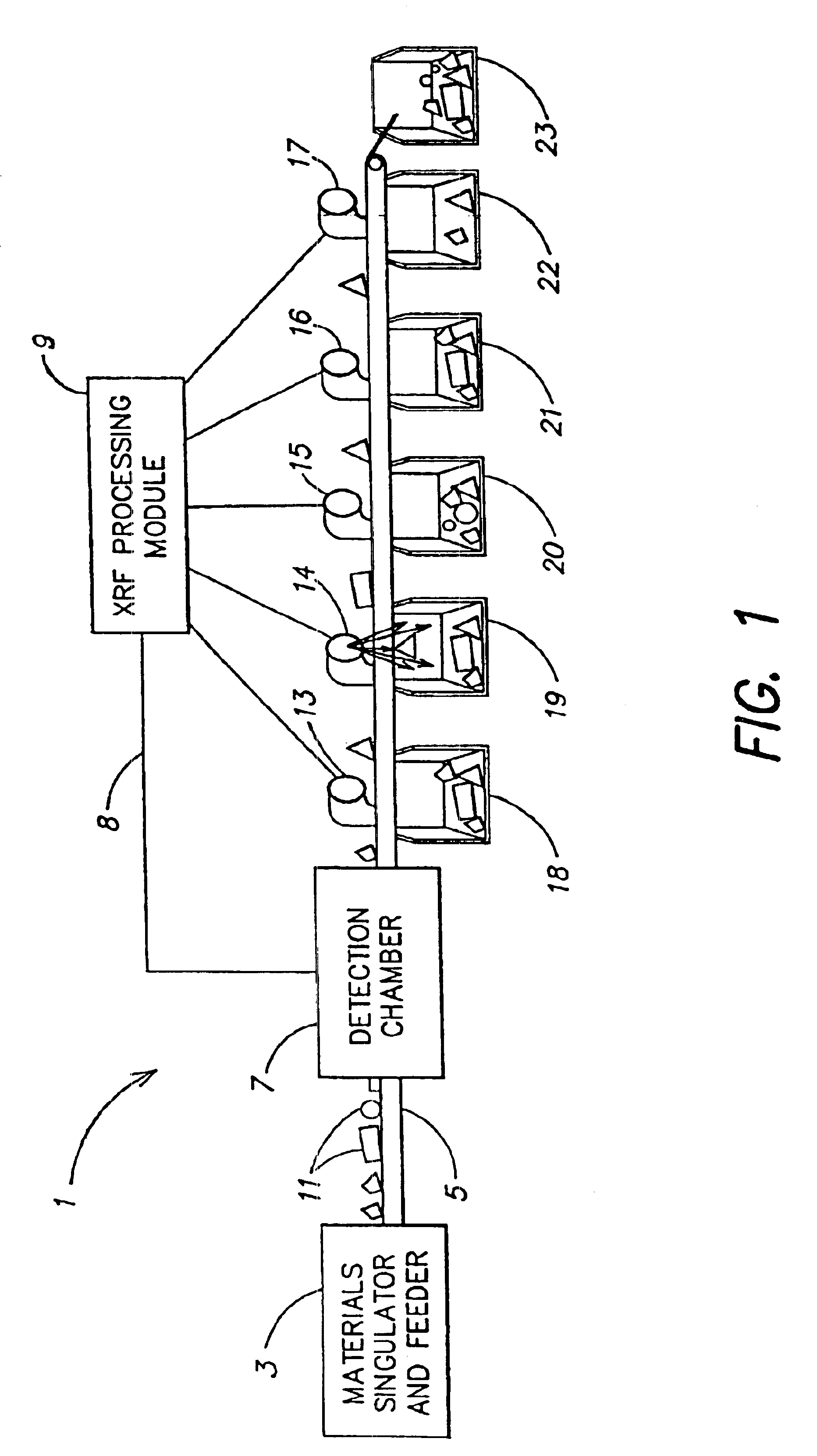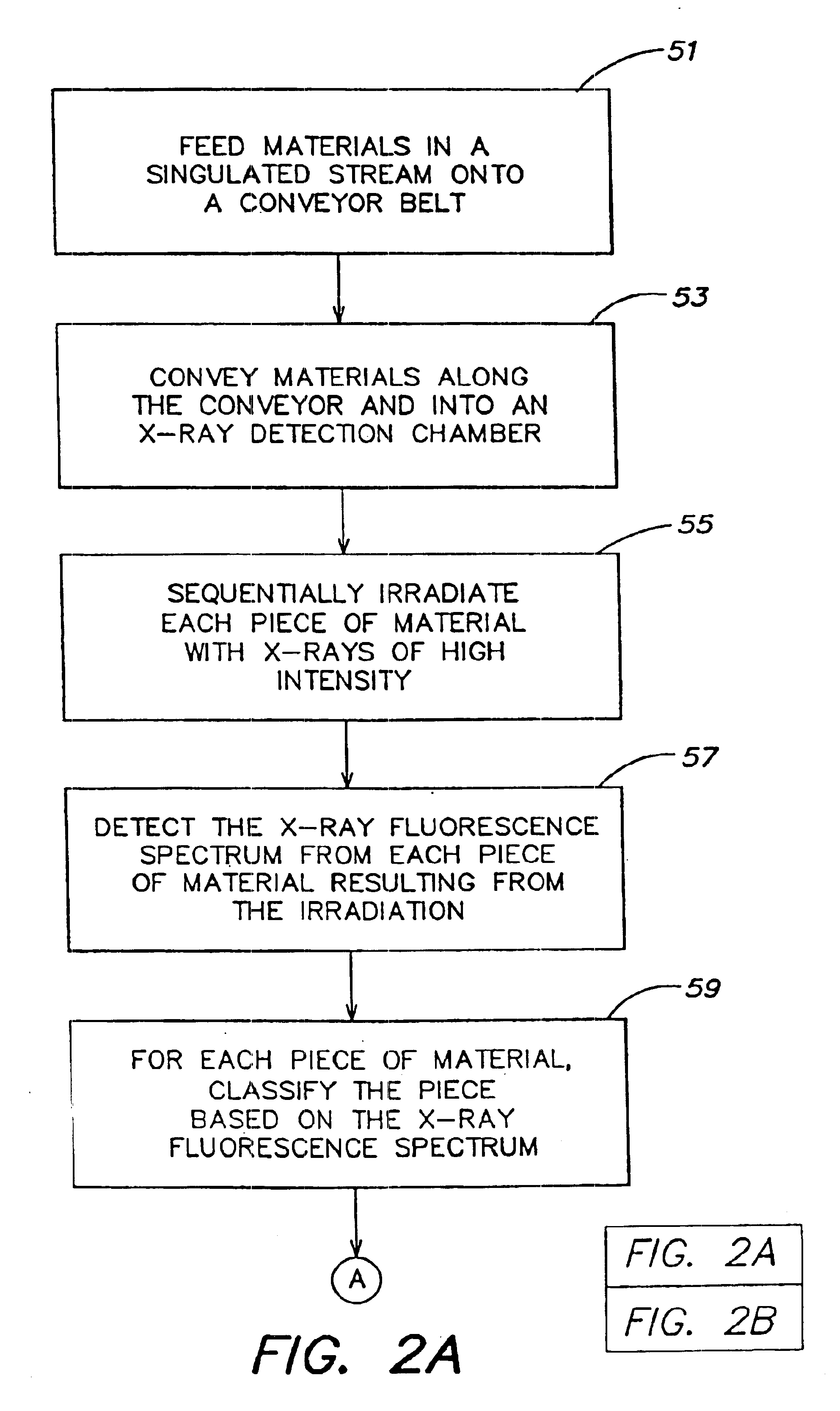High speed materials sorting using x-ray fluorescence
a high-speed, materials technology, applied in the direction of material analysis by secondary emission, material analysis using wave/particle radiation, instruments, etc., can solve the problems of limited analysis, system that enables use of high-intensity x-ray sources, and inability to implement high-intensity x-ray sources, etc., to achieve the production of x-rays from other objects, the effect of not significantly compromised or complicated in the determination of x-ray fluorescence spectrum
- Summary
- Abstract
- Description
- Claims
- Application Information
AI Technical Summary
Benefits of technology
Problems solved by technology
Method used
Image
Examples
Embodiment Construction
[0084]The combination of the high speed x-ray irradiation and detection techniques and the execution of a complex sorting algorithm described herein permit highly accurate classification and sorting of materials at very fast rates, at least one to two orders of magnitude faster than currently used techniques.
[0085]FIG. 1 depicts an illustrative embodiment of a high speed material sorting system. A materials singulator and feeder 3 feeds a singulated stream of pieces of material 11 onto a conveyor belt 5. The conveyor belt 5 receives the pieces of material 11 and conveys the pieces of material through an x-ray detection chamber 7 downstream to be sorted into sorting bins 18-23. Although a conveyor belt is used in the illustrative embodiment of FIG. 1, any suitable conveying means may be used.
[0086]An x-ray detection chamber 7 receives each piece of material, irradiates the material with x-rays, and detects the x-ray fluorescence (xrf) from the materials as a result of the irradiation...
PUM
| Property | Measurement | Unit |
|---|---|---|
| time | aaaaa | aaaaa |
| time | aaaaa | aaaaa |
| time | aaaaa | aaaaa |
Abstract
Description
Claims
Application Information
 Login to View More
Login to View More - R&D
- Intellectual Property
- Life Sciences
- Materials
- Tech Scout
- Unparalleled Data Quality
- Higher Quality Content
- 60% Fewer Hallucinations
Browse by: Latest US Patents, China's latest patents, Technical Efficacy Thesaurus, Application Domain, Technology Topic, Popular Technical Reports.
© 2025 PatSnap. All rights reserved.Legal|Privacy policy|Modern Slavery Act Transparency Statement|Sitemap|About US| Contact US: help@patsnap.com



